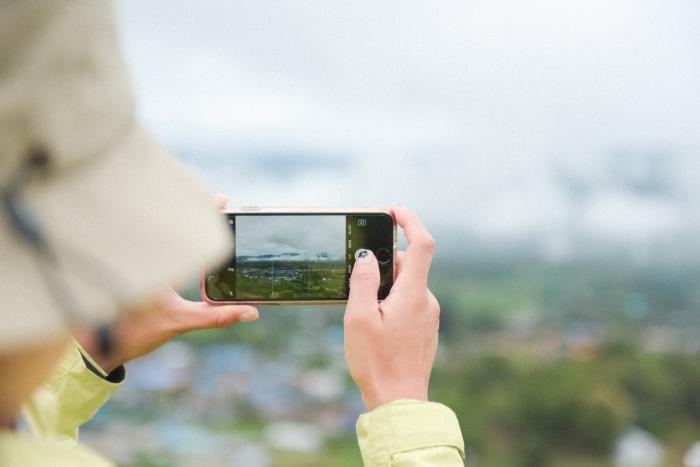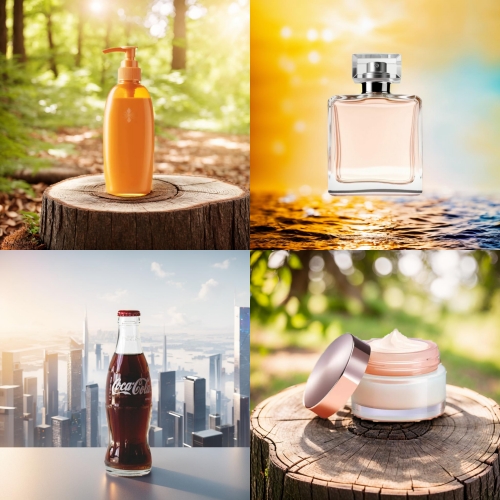How to Blur the Background of a Photo?
A blurred background contains a wide range of purposes, including blurring the background in order to draw attention to the main character in the foreground. This is a trick which is often used in portrait photography, making the person or object stand out more obviously. A blur photo background can also be used for product photos.
If you want to adjust a photo in a direct way, you can blur the background of a photo in some image editing software. There are many types of blur to experiment with as well, such as motion blur and lens blur. We will explore the effects of blur picture background images and how to blur background in picture in this guide.
Understanding Background Blur
Background blur in photography can immensely boost aesthetic appeal and plays a crucial role in enhancing the main subject of an image. When a photographer chooses to blur image background, they can use the blur technique that can not only elevate the visual allure of the photograph but also isolate and magnify the subject's presence.

Even the normal guys who not familiar with photo-editing APP can also use the image enhancement software, including PhotoRoom, Canva, UniFab... Using these user-friendly apps to blur background of photo online, resulting in appealing visuals. With the contrast of soft and out-of-focus background, emphasizing the sharpness and detail of the subject. This artistic option not only for some professional photographers, however, in order to offers user-friendly tools to blur photos, we allows user to transform portraits and other types of photo in seconds.
With transform background into blur version, whether subtle or pronounced, it has the power to transform an ordinary photo into a art, which inviting viewers to engage with the main subject for longer than they would have otherwise.
Why Blur Image Background?
A blur background image can be useful in many industries and projects, we offers some examples here:
-
E-commerce
Blurring the background in e-commerce product images, which places the primary focus on the product itself, helping customers to better assess its features and details without distractions.

A blurred background adds a professional and polished look to product images, which enhancing the brand's credibility and trustworthiness. When e-commerce websites maintain a consistent style with blurred backgrounds for product images, it will creates a cohesive and visually shopping experience for customers. Combined with the production introduction, the consumers will get the excellent experience.
-
Social Media
Blurred backgrounds on social media posts, particularly in platforms like Instagram and Pinterest, make images more visually striking and engaging.

Blurring the background can help in emphasizing the main subject of a social media post, making it easier to tell a story or convey a message. Many users on social media platforms appreciate the aesthetics of images with blurred backgrounds, which can lead to higher engagement and shareability.
-
Photography and Art
In portrait photography and art, background blur isolates the subject, adding depth and dimension while eliminating distractions.
Artists and photographers use background blur as a creative tool to experiment with different visual effects, moods, and styles, allowing for unique and compelling compositions.
How to Blur the Background of a Photo?
With an app such as PhotoRoom, you can blur image background online free of cost, although it adds a watermark. Regardless, the app is pretty easy to use.
Step 1: Use the link attached above to gain access to the blur background tool of the platform. Once there, you can click on the button to upload an image or drag and drop an image.
Step 2: The AI tool will automatically start working on your image. It will redirect you to the editor mode wherein you will see the final image along with editing tools provided by PhotoRoom. You can use them to edit your image further, if needed.
Step 3: You can click on the "Download" option to save the photo. The paid account will enable you to get the image without the watermark.
Tips for Achieving the Perfect Blur
-
Use a Wide Aperture: The aperture settings on your camera or phone plays a big role in creating a blur background or bokeh effect. To achieve a shallow depth of field and a blurred background, use a wide aperture, which corresponds to a low f-number. A lower f-number lets in more light and narrows the focus to the subject, blurring the background.
-
Smartly Positioned Subject: Place your subject at a considerable distance from the background. The farther the subject is from the background, the more pronounced the background blur will be.
-
Increase the Distance: If you can't control the distance between the subject and the background, try moving closer to your subject while maintaining a significant gap between the subject and what's behind them.
-
Use an Editor: This goes without saying, but using an effective image editor will enable you to blur image background online. You can simply add bokeh effects to your images in simple steps.
-
Focus on the Subject: Ensure that the camera's focus is precisely on the subject you want to highlight. You can use techniques like single-point focus to pinpoint your subject and create a pleasing background blur.
Conclusion
Blur backgrounds hold significant value in photography, social media, and various visual contexts where making a striking impression is key. However, achieving the perfect blur can be a challenging task for many. Fortunately, there are a variety of online apps and tools available, such as PhotoRoom, VanceAI, Fotor, and others, which simplify the process.
These apps empower users to effortlessly create the desired background blur, allowing them to enhance their photos, posts, or visuals with minimal effort. With user-friendly interfaces and advanced algorithms, these online tools provide a convenient solution for anyone seeking to add more aesthetic value to their images.



